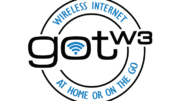The iPhone SE 3 is finally starting to hit store shelves. It was released about two weeks ago to pre-order. If you haven’t pre-ordered, you may be able to get one now by calling us at 888-233-7563.
This phone has a lot of fans. It combines the size of an old iPhone 8 with the same processor as an iPhone 13. The price is right, too. For a smidge over $400 you get a 64GB phone with a fast processor. There are a few tradeoffs of course. The screen is smaller and a bit dimmer. You get Touch ID instead of Face ID, although you may not consider that a tradeoff if Face ID doesn’t work with you wearing a mask. And, while the iPhone SE 3 lets you use the 5G network, it doesn’t let you use the super-fast millimeter wave 5G. That 5G, which AT&T calls 5G+ and Verizon calls 5GUW, is what gives you the ability to download a whole movie in under a minute.
Why doesn’t the iPhone SE 3 have this capability?
Well, there’s only so much you can do with a $400 phone. You have to cut corners somewhere. The millimeter-wave radio must be pretty expensive, that’s my guess. Another thought is that Apple has to leave something to the more expensive phones. If they didn’t, no one would spend $1,500 for an iPhone 13 Pro Max, right?
But let’s get down to the question
As I said in the title of the article, the real question is whether or not you need that capability. For the most part, it boils down to where you live.
While all the major carriers do a pretty good job of providing some sort of 5G service all over the country, most of that 5G service is somewhat limited. While LTE topped out at about 75Mbps download speed, you should be able to get 90-100 from most nationwide 5G. That’s a far cry from the 1,000Mbps that 5G promises from its millimeter-wave network. Carriers are just now starting to roll out so-called “mid-band 5G,” which is faster than what you have now but not as fast as millimeter-wave.
The problem
Millimeter-wave 5G doesn’t travel very well through the air and it does even worse through buildings. That means in order to use it, you need to be outside and within about 500 feet from a cell tower. (With regular nationwide 5G, you can be 1-2 miles from a tower.) Because of the shortened distance, millimeter-wave 5G towers are really only found in really densely populated areas. Think like Times Square in Manhattan or your average pro sports stadium, anywhere that people are really close to each other. Without enough people in that 500-foot radius, it doesn’t make much financial sense to put a tower there.
So, folks who live in the suburbs or rural areas probably don’t have a need for that millimeter wave radio and probably won’t use it unless they are far from home.
And you know what, that’s ok
I have to say, once you’ve gone to a few speed test sites and downloaded a movie in one minute to show your friends, there’s not much more to do with speeds that fast. It’s faster than you really need for the kind of surfing and shopping you do. The real promise of 5G isn’t the top speed anyway. It’s super-low latency. Low latency means that everything takes less time once you tap on the screen. Everything feels faster because you’re not waiting that extra fraction of a second as things travel through the cellular network.
Bottom line, you probably won’t miss that millimeter-wave radio, at least not now. Maybe in 5 years they’ll come up with something that needs it, but for the moment you can get that iPhone SE 3 and not worry a bit about it. Just consider calling Solid Signal at 888-233-7563 to add a new line of service or upgrade your phone. We’re AT&T dealers and can do everything those guys in the mall can do, but with better customer service. And of course, shop at Solid Signal for everything you need to live your best digital life!





